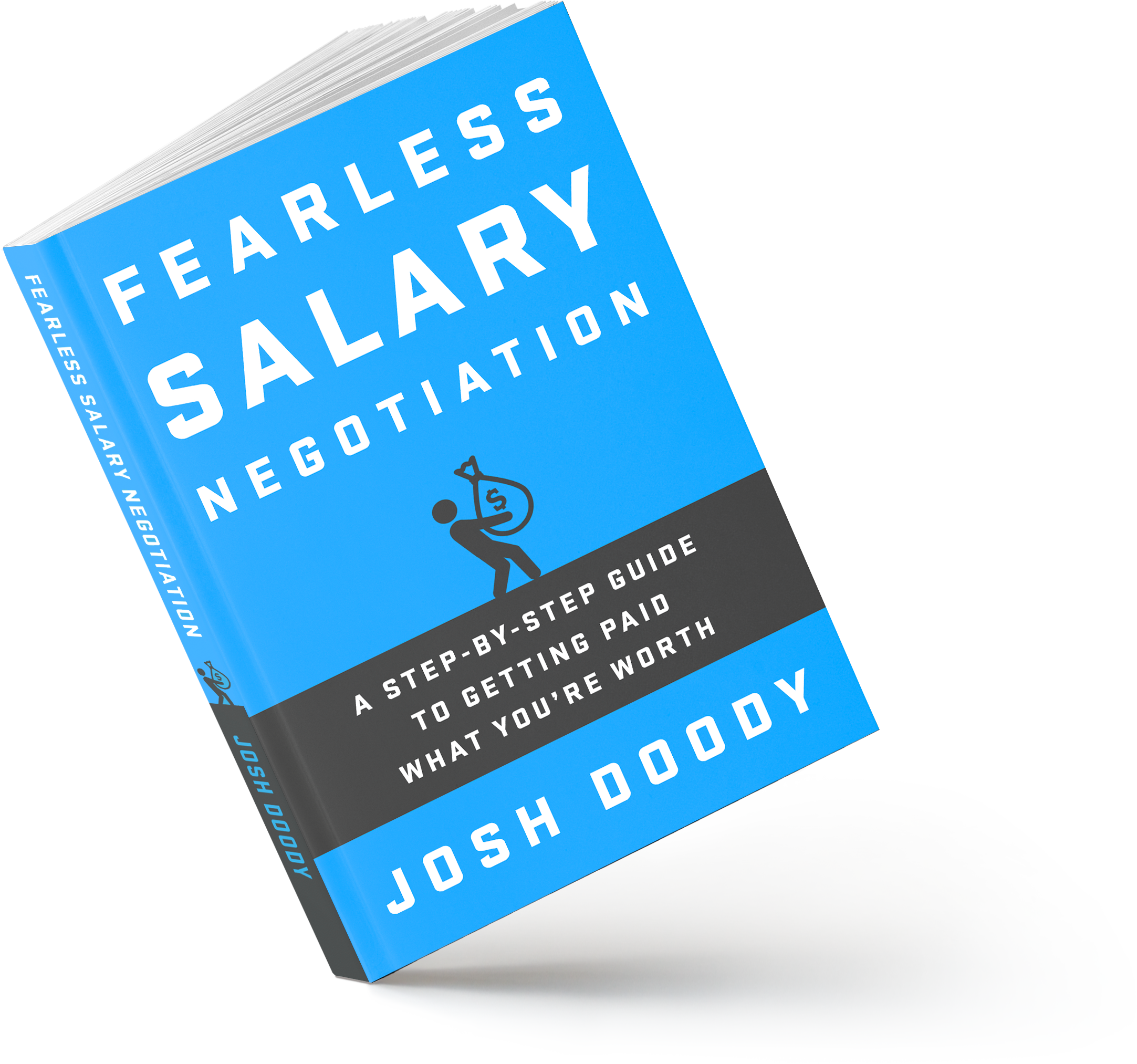You did your homework and waited for the company to make the initial offer without disclosing your current or desired salary. Then you carefully considered your counter, trying to maximize your salary while accounting for how badly the company needs you to do this job, and how badly you need this job. The recruiter may have then gone back to Finance or the hiring manager to talk about your counter and get final authorization for the amount they can pay you to do this job.
Defining the negotiation window
That conversation with Finance or the hiring manager usually goes something like this:
“We offered Josh $50,000 and he countered at $56,000. This job pays up to $58,000, so we’re getting close to the top of that range. Where do we want to come back to him? Let’s go with…”
They offered me $50,000 and I countered at $56,000. For now, let’s just drop all the dollar signs and zeros: they offered 50 and I countered at 56. It’s extremely unlikely they would come back with a number lower than 50 (after all they offered that number to start) or above 56 (it would be odd for them to give me more than I asked for in my counter), so they’ll either stick to 50, come up to my counter of 56, or come back with something in between. This means my expected negotiation window is 50 to 56.
We’ll keep using the example above for the rest of this section, but you’ll want to use your own numbers to make this as relevant as possible for your own negotiation. Before you move on, you need to determine your own negotiation window so that you can plan for it. Got it? Okay, let’s make a plan for each increment within your negotiation window.
Planning for each increment within your negotiation window
Now you have to do some planning for different hypotheticals. We’ll make this easy by writing these down so you don’t forget, and so you don’t have to think much during your final discussion.
The first thing to do is determine whether there’s a number in your negotiation window that will make you happy such that you’ll just accept that number or anything above it. In my example above, I would be happy with 55 or above, so if they responded to my counter with an offer of $55,000 or more, I would accept it and stop negotiating.
Next, you need to determine your minimum acceptable salary within the negotiation window. Note that this is not necessarily your “minimum acceptable salary” from earlier. This may be a new number that you decide based on the window you have defined between their offer and your counter. You’re updating your minimum based on what you’ve learned from the offer they made you.
In my case, my minimum acceptable number was 52. This means that if their response to my counter is anything below 52, I’ll go straight to, “I’m sorry, but I can’t accept anything less than 52 for this job.”
That should leave you with some numbers below “automatic yes” and above “automatic no”. This range should actually be pretty narrow by now, and you can probably break it into a few $1,000 or $500 increments. For each increment, you’ll prepare a salary request, plus a benefits request. The salary request is a number that you can give in the following way: “If you can meet me at this amount, I’m on board.” The benefits request is in case they can’t meet you at that amount; you’ll want to ask about other “levers” you can pull as part of your benefits package. List these so that the most important ones are first.
Which levers you want to pull in your benefits request are up to you, but you should have at least two or three in mind because some things are set in stone at some companies while others may be negotiable. In fact, everything except salary may be set in stone, but at least you can try to eke out some additional benefits once you’ve found the maximum salary they will pay you. Some benefits that may be negotiable include vacation days, work location (maybe you can work from home two days a week to reduce your commute), greater reimbursements for home-office costs (home internet, office lease), reimbursement for your mobile phone if you’ll use it for work, reimbursement for relocation expenses, and so on.
Let’s make this easy and just write down a reaction to each number from 50 through 56:
$56,000 (Counter)
- 56 - That sounds good to me! When do I start?
- 55 - That sounds good to me! When do I start?
- 53.5 to 54 - (1) I’m on board if you can do 55. (2) Can we talk about upping my vacation? (3) Can we talk about reimbursing my monthly office expenses ($265)?
- 52.5 to 53 - (1) I’m on board if you can do 54.5. (2) Vacation. (3) Office expenses.
- 51.5 to 52 - (1) I’m on board if you can do 54. (2) Vacation. (3) Office expenses.
- 51 - I can't accept less than 52.
- 50 - I can't accept less than 52.
$50,000 (Offer)
Once you’ve written out your script, you’re ready for your final discussion.
How this tactic earned me $1,500
I realize this may seem like overkill, but it’s absolutely worth the effort. In fact, this method saved me $1,500 in the real-life negotiation that’s the basis for our example.
The final discussion will often be verbal, and most people (myself included) tend to get nervous when negotiating something high-stakes in real-time. This method helps you run through the possibilities for your final discussion ahead of time and script your responses so that stress isn’t as much of a factor.
When I was negotiating the salary we’ve been using for this example, the recruiter called me for the final discussion, and she gave me their response to my counter. Their response was 53.5.
I was nervous, so my mind jumped straight to thinking, “You didn’t get the salary you countered with, so let’s try for some additional benefits.” I started to say, “Okay, can we talk about what other levers might be available to pull in terms of benefits….” But then I looked up at my whiteboard and realized that “No! That’s not the first thing I say if they say 53.5!” The white board said that the first thing I should say if they responded with 53.5 was, “If you can do 55, then I’m on board.” So I stopped myself and said, “Actually, forget I said that. If you can do 55, then I’m on board.”
The recruiter said, “Okay, I think we can do that. I just need to get it approved.” and our call was over about 20 seconds later. I almost settled for $53,500 as my base salary, but because I had a script prepared for the final discussion, I earned an extra $1,500.

